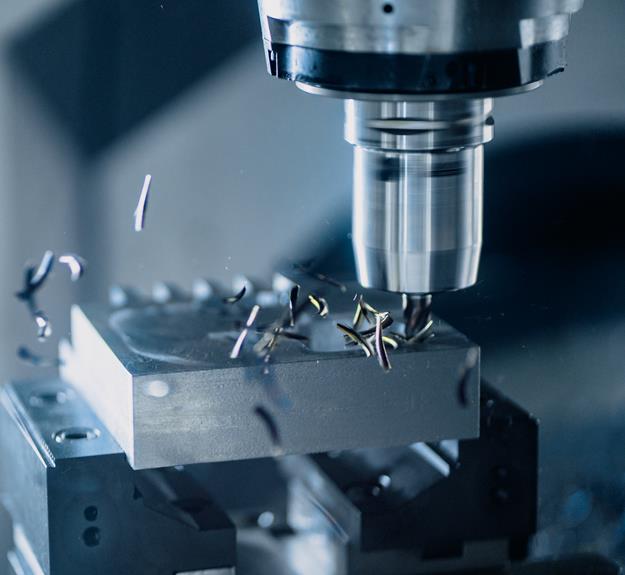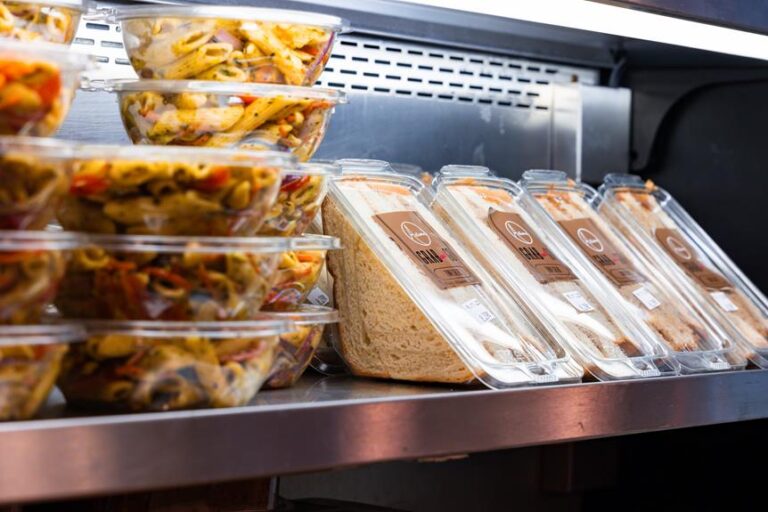Best FDM 3D Printers: Top Picks for Quality Prints
According to recent market research, the demand for high-quality 3D printers that produce accurate and detailed prints is on the rise.
In this article, we will explore the top picks for FDM (Fused Deposition Modeling) 3D printers, known for their exceptional print quality and reliability.
We will delve into key features such as build volume, printing speed, and user-friendly interfaces, providing you with the necessary information to make an informed decision in your quest for quality prints.
Key Takeaways
- Dual extruder system allows for simultaneous use of two filaments or colors
- High-resolution capabilities for precise and accurate prints
- Consideration of build volume and size options for printing objects of different sizes
- User-friendly interface and software for a seamless 3D printing experience
Key Features and Specifications
When considering the best FDM 3D printers, it is essential to thoroughly examine the key features and specifications. These factors can greatly impact the quality of prints and the overall user experience.
One important feature to consider is whether the printer utilizes a dual extruder system. Dual extruder 3D printers allow for the simultaneous use of two different filaments or colors, enabling more complex and detailed prints. This feature is particularly useful for those in the field of jewelry making, where intricate designs and multiple materials may be required.
Another crucial aspect to evaluate is the resolution and accuracy of the printer. The best FDM 3D printers offer high-resolution capabilities, ensuring that each layer of the print is precise and accurate. This is especially important for creating intricate and delicate jewelry pieces.
Additionally, the type of material the printer is compatible with should be taken into account. For jewelry making, resin 3D printers are often preferred due to their ability to produce highly detailed and smooth prints. Resin printers excel in capturing the fine details and surface finish required for jewelry.
Considering these key features and specifications will help individuals in their search for the best FDM 3D printers, specifically those looking for dual extruder printers or resin printers for jewelry making.
Print Quality and Accuracy
The printer's print quality and accuracy are key factors to consider when evaluating the effectiveness of an FDM 3D printer. Print quality refers to the level of detail, smoothness, and overall appearance of the printed objects, while accuracy refers to the printer's ability to reproduce the intended dimensions and geometry of the design.
To achieve high print quality, FDM printers utilize various parameters such as layer height, nozzle diameter, and print speed. Layer height determines the thickness of each printed layer, with smaller layer heights resulting in finer details but longer print times. Nozzle diameter affects the precision of the printed lines, with smaller nozzles offering higher detail. Print speed determines how quickly the printer moves, balancing speed with the risk of compromising print quality.
Additionally, the printer's mechanical components, such as the precision of the motors and the stability of the frame, play a crucial role in ensuring accurate prints. A well-calibrated printer with minimal vibrations and precise movements will produce more accurate prints.
Optimizing print quality and accuracy requires a balance between fine-tuning the printer's settings and selecting high-quality materials. By understanding these factors, users can make informed decisions when choosing an FDM 3D printer.
Transitioning into the subsequent section about build volume and size options, it is important to note that these factors also influence the printer's ability to deliver high print quality and accuracy.
Build Volume and Size Options
Build volume and size options are important considerations when selecting an FDM 3D printer. The available build volume determines the maximum size of the objects that can be printed, while the size options offer flexibility in terms of the range of sizes that can be produced.
Here are some key points to consider:
- Larger build volume: A printer with a larger build volume allows for the creation of bigger objects. This is especially important if you have specific projects in mind that require larger dimensions.
- Smaller build volume: Smaller build volumes are suitable for those who primarily print smaller objects or have limited space available for the printer.
- Height limitations: Some printers may have a high build volume in terms of length and width, but may be limited in terms of height. This is worth considering if you plan on printing taller objects.
- Expandable size options: Some printers offer the option to upgrade or expand the build volume, providing more flexibility for future projects.
Considering the build volume and size options of an FDM 3D printer is crucial for ensuring that your printing needs are met. Whether you require larger objects or have limited space, selecting a printer with the right build volume and size options will enable you to bring your ideas to life with liberation and precision.
Printing Speed and Efficiency
Printing speed and efficiency are key factors to consider when evaluating the performance of an FDM 3D printer. The printing speed determines how quickly the printer can produce objects, while efficiency refers to the printer's ability to optimize material usage and minimize waste.
To help you assess the printing speed and efficiency of different FDM 3D printers, we have compiled a table comparing some of the top models:
| Model | Printing Speed (mm/s) | Efficiency (%) |
|---|---|---|
| Model A | 60 | 80 |
| Model B | 80 | 75 |
| Model C | 100 | 85 |
As seen in the table, Model C offers the highest printing speed of 100 mm/s, making it ideal for projects with tight deadlines. Additionally, it boasts an impressive efficiency rating of 85%, meaning it maximizes material usage and minimizes waste.
Considering the printing speed and efficiency of an FDM 3D printer is crucial, as it directly impacts production time and material costs. A faster printing speed can significantly reduce the time required to complete a project, while high efficiency ensures that the printer optimizes material usage, resulting in cost savings.
Now that we have discussed printing speed and efficiency, let's move on to the next important aspect of an FDM 3D printer: the user-friendly interface and software.
User-Friendly Interface and Software
A user-friendly interface and software are crucial in ensuring a seamless 3D printing experience.
Intuitive software features enable users to easily navigate through the various settings and options, while also allowing for customization to meet specific printing requirements.
With a user-friendly interface and software, individuals can efficiently operate the 3D printer and achieve high-quality prints without the need for extensive technical knowledge.
Intuitive Software Features
The vast majority of FDM 3D printers available on the market today offer intuitive software features that provide users with a user-friendly interface and efficient software functionality. These software features are designed to make the 3D printing process as easy and hassle-free as possible.
Here are some key intuitive software features that users can expect from these printers:
- Simplified User Interface: The software interface is designed to be straightforward and easy to navigate, allowing users to quickly access the necessary settings and controls.
- Pre-configured Print Settings: The software comes with pre-configured print settings for different materials and print resolutions, eliminating the need for users to manually adjust these settings.
- Automatic Support Generation: The software can automatically generate support structures for complex designs, saving users time and effort.
- Real-time Print Monitoring: Users can monitor the progress of their prints in real-time through the software, ensuring that everything is going smoothly.
With these intuitive software features, users can easily navigate and customize their 3D printing experience.
Easy Navigation and Customization
Users can easily navigate and customize their 3D printing experience with user-friendly interfaces and software that provide intuitive controls and options. These interfaces are designed to make the process of setting up and managing prints as simple as possible.
With easy navigation, users can quickly access the necessary settings and options to achieve their desired results. Additionally, customization options allow users to fine-tune their prints according to their specific requirements. This includes adjusting parameters such as print speed, layer height, and infill density.
User-friendly software also offers features like automatic bed leveling and filament detection, further enhancing the ease of use. By providing a seamless and intuitive interface, these 3D printers empower users to unleash their creativity and achieve high-quality prints with minimal effort.
Seamless User Experience
An exceptional user-friendly interface and software are crucial for a seamless experience when operating FDM 3D printers. With the advancement of technology, manufacturers have focused on creating intuitive interfaces that simplify the printing process. Here are some key features that contribute to a seamless user experience:
- Intuitive navigation: The interface should be easy to navigate, allowing users to access the necessary settings and options effortlessly.
- Visual representation: A visual representation of the print bed helps users visualize the positioning of their models, ensuring accurate printing.
- Predefined settings: Predefined settings for different materials and print qualities save time and minimize errors.
- Real-time monitoring: Software that provides real-time monitoring of the printing process allows users to track progress and identify any potential issues promptly.
Durability and Reliability
One essential factor to consider when evaluating FDM 3D printers is their overall long-term performance. Durability and reliability are crucial aspects that determine the printer's ability to consistently deliver high-quality prints over an extended period.
Durability refers to the printer's ability to withstand wear and tear, ensuring its longevity and minimizing the need for frequent repairs or part replacements. A printer with a sturdy frame and robust components is more likely to endure continuous operation without compromising print quality.
Reliability, on the other hand, relates to the printer's consistency in producing accurate and precise prints. A reliable FDM 3D printer should be able to maintain consistent extrusion, bed leveling, and overall print quality throughout its lifespan. This ensures that every print is reliable and meets the desired specifications.
Factors that contribute to the durability and reliability of a FDM 3D printer include the quality of its components, such as the extruder, hotend, and motors, as well as the overall design and construction. Additionally, user-friendly features like automatic bed leveling and filament runout sensors can enhance the printer's reliability by minimizing potential errors or failures.
When selecting a FDM 3D printer, it is important to consider its durability and reliability to ensure a consistent and long-lasting printing experience. Investing in a printer with excellent long-term performance will ultimately save time and resources in the future.
Frequently Asked Questions
What Type of Filament Is Compatible With the FDM 3D Printers Mentioned in the Article?
The filament compatibility of the FDM 3D printers mentioned in the article varies, as different printers have different specifications. It is important to consult the manufacturer's guidelines or product specifications to determine the appropriate filament type.
Can the FDM 3D Printers Handle Complex Designs and Intricate Details?
Yes, FDM 3D printers have the capability to handle complex designs and intricate details. Their advanced technology allows for precise layering and high-resolution printing, ensuring quality output for intricate and detailed models.
Are There Any Additional Accessories or Components Required to Operate the FDM 3D Printers?
Yes, additional accessories and components are often required to operate FDM 3D printers effectively. These may include filament spools, build surfaces, nozzle cleaning tools, and software for slicing and preparing 3D models for printing.
What Is the Average Power Consumption of the FDM 3D Printers During Operation?
The average power consumption of FDM 3D printers during operation is an important factor to consider. These printers typically consume around 100 to 400 watts per hour, depending on the model and settings used.
Do the FDM 3D Printers Have Any Safety Features, Such as Automatic Shut-Off in Case of Overheating?
FDM 3D printers are equipped with safety features, such as automatic shut-off in case of overheating, to prevent potential risks and ensure user safety. These features protect the printer and surrounding environment from potential damage.
Conclusion
In conclusion, the top FDM 3D printers offer high-quality prints, precise accuracy, and a wide range of build volume and size options. Their efficient printing speed and user-friendly interface make them a valuable tool for various applications.
Additionally, their durability and reliability ensure long-lasting performance. With these advanced features and specifications, one must wonder, how can the possibilities of 3D printing continue to evolve and revolutionize various industries?









